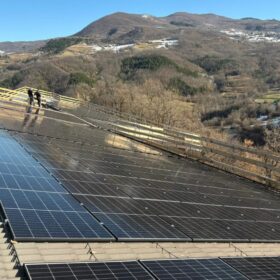LCOE of grid-scale solar expected to drop 2% globally in 2025
A report from BloombergNEF said fixed-axis solar levelized cost of energy is expected to fall to $0.035/kWh, while battery energy storage LCOE is expected to decrease 11%.
Germany’s Tesvolt begins energy trading from pooled commercial batteries
Tesvolt Energy will collaborate with algorithm traders Enspired, Entrix, and The Mobility House to trade pooled 100 kWh-plus battery units for energy optimization.
What’s cooking in PV?
Scientists have conducted an analysis of 20 years of academic publications about PV-powered electric cooking and have found interest in the field peaked in 2021-2022 in both developing and developed countries. They have also outlined some potential future developments.
Venture capital sees opportunities in digitalization, software-driven PV models
Vireo Ventues Managing Partner Felix Krause speaks with pv magazine about solar-related investments in the startup landscape.
Liberia seeks consultancy services for solar, battery storage auction
The government of Liberia is seeking transaction advisers to develop the legal, technical, commercial and financial mechanisms for the country’s first solar and battery energy storage auction. The deadline for expressions of interest is Feb. 25, 2025.
German court rules Senec dealer must refund cost of reduced-capacity home battery
Judges at Bielefeld Regional Court ruled the maximum 70% operating capacity of the home battery – while replacement lithium ferro-phosphate (LFP) cells are awaited – is a material defect. Senec is appealing against the ruling.
The Hydrogen Stream: Acwa Power, Sefe to supply green H2 to Europe
Acwa Power has partnered with Sefe to set up a hydrogen bridge between Saudi Arabia and Germany, while the Danish government has committed up to $1.1 billion to develop a new hydrogen pipeline.
Spain deploys 6.46 GW of new solar in 2024
Spain’s cumulative installed PV capacity reached 32 GW at the end of December 2024, following 6.46 GW of new annual solar additions.
Solax presents scalable 215 kWh C&I battery
Solax demonstrated its industrial energy storage solution, with peak load management and electricity cost optimization, in front of around 50 installers. The live presentation focused on efficiency, safety, and weather resistance.
Community managers key to wider adoption of energy communities
New research from France suggests that energy communities could benefit from dedicated community managers to address operational complexities. Researchers says that this role could offer contracts or assurances to ease concerns among risk-averse members.










